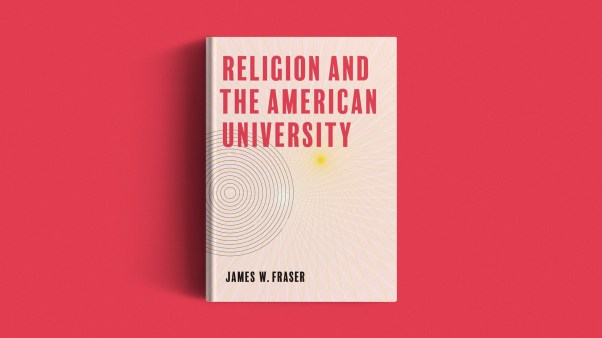The Holy City In History
Jerusalem: The Tragedy and the Triumph, by Charles Gulston (Zondervan, 1978, 302 pp., $12.95), and Jerusalem as Jesus Knew It by John Wilkinson (Thames and Hudson, 1978, 208 pp., $8.95), are reviewed by William Sanford LaSor, professor of Old Testament, Fuller Theological Seminary, Pasadena, California.
These two books on Jerusalem are both good, but quite different. Gulston’s work seeks to give us a portrait of Jerusalem that stresses the emotional impact on the reader, whereas Wilkinson’s volume deals entirely with the Jerusalem of Jesus’ day, and is principally concerned with determining the scientific acceptability of the various sites. Each has its place, and both are necessary for careful study of the city that is holy to three faiths.
Gulston paints on a very broad canvas. He gives us the story of Jerusalem from the time of David to A.D. 1973, and then moves ahead into the Millennium. He sees history as moving toward a goal, and he sees the reestablished Israel in the messianic age as that goal. Everything else fits into that view of history. Such a view is probably not scientifically defensible, and perhaps not even scientifically credible. It is based on faith. But that does not invalidate the view. Even science would never move into new areas if it were not for the visions of men of faith. In the opinion of this reviewer, Gulston’s faith is based on biblical teachings, therefore he deserves careful consideration by biblical students.
Part I deals with Jerusalem in the pre-Christian era. Part II covers the period from the arrival of the Romans to the end of the earthly life of our Lord. Part III includes the two Jewish revolts, the various rulers of Jerusalem, from the Romans to the present century, and the modern State of Israel. Chapters 34–37 deal with the revival of Israel and messianic implications. The book is well produced and bound, and contains many pictures and line drawings.
Unfortunately, the author has let a number of errors in dates and details get past him. Errors in dates are not instances where his system does not agree with mine; rather, they are caused because he is not consistent with himself. For example, David captured Jebus in 1048 B.C. (p. 42) and died in 970 B.C. (p. 47)—which would give David a reign of around 80 years. Samaria fell in 722 (p. 48) and in 721 (p. 67). Suleiman the Magnificent rebuilt the walls of Jerusalem between A.D. 1537 and 1541 (p. 205), but Jesus entered Jerusalem on that first Palm Sunday “through the now blocked-up Golden Gate before you in the eastern wall” (p. 59). These and other errors should be corrected before the book is reprinted.
Wilkinson’s work, one of a large number of valuable volumes on peoples and places published by Thames and Hudson, seeks “to describe the Jerusalem of Jesus’ time as precisely as possible, especially in its physical aspects, such as climate, topography, and archaeology” (p. 196). It, too, contains a very large number of photos and line drawings, including many excellent aerial photos of specific sites in Jerusalem.
Reminding us that “Gospels are not biographies” (p. 9), and that the Gospel writers are more concerned with a spiritual belief than a material truth, Wilkinson nevertheless makes a strong case for understanding the historical and geographical background of the Gospels. Dividing his work into “The Background,” “Jesus Comes to Jerusalem,” “City of Wrath,” “Beyond Jerusalem,” and “Memories,” the author leads us step by step through the gospel story, taking up the places, assessing their identities, evaluating the traditions on which many sites are identified, and building as strong a case as he believes to be scientifically acceptable for each. The work is very carefully done, but doubtless will leave many readers less than satisfied, particularly those who want “proof” for every item in the Bible.
Wilkinson’s study of the site of Golgotha is particularly noteworthy (pp. 180–194). In addition, he has given us the full letter by General Charles Gordon, setting forth his reasons for identifying Skull Hill (“Gordon’s Calvary”) with Golgotha (pp. 198–200). Of course, as goes Gordon’s Calvary, so goes the Garden Tomb. At this point we might profitably consider Wilkinson’s distinction between the “intellectual approach” and the “devotional approach”:
“It is not going to make a great deal of difference whether a site is scientifically acceptable if the visitor’s only object is to pray at it. Indeed it sometimes proves easier to pray in an attractive place, like the beautifully kept Garden Tomb, than in the far less attractive Holy Sepulchre, regardless of the fact that one is likely to have been the place where Jesus rose from the dead and the other is not” (p. 196).
Faith is built on knowledge, and the Christian faith is built on our knowledge of the testimony of those who were with Jesus in the days of his flesh. But that is something quite different from the modern identification of the sites where the gospel events took place. These books will help us to know what is knowable, to believe what is believable, and to distinguish between the two.
A Critique Of John Rawls
Justice or Tyranny? by David Lewis Schaefer (Kennikat, 1979, 150 pp., $12.50) is reviewed by Winfried Corduan, assistant professor of religion and philosophy, Taylor University, Upland, Indiana.
Justice or Tyranny? is a book of broad implications. It is a critique of the political philosophy of John Rawls and while it appears to be a technical philosophical work, it speaks beyond that to moral and political philosophy as a whole, as well as to the role of religion in ethics.
Schaefer, who teaches political science at Holy Cross College in Massachusetts, attempts to counter the tide of widespread acclaim for the work of Rawls. His central claim is that Rawls has merely legitimized an arbitrary commitment to a liberal ideology by applying a veneer of philosophical methodology.
Rawls believes that the considered judgments of people reveal an innate sense of what is just. Based on this premise, it is possible to hypothesize an “original position” in which representatives of the human race, completely abstracted from specific circumstances and moral or religious commitments, would then arrive at the foundational principles of what constitutes justice. Rawls comes up with two such principles, which are summarized as, “Liberty can be restricted only for the sake of liberty”; and “Social and economic inequalities are to be arranged … to the greatest benefit of the least advantaged.” Previous commentators on Rawls have found this theory particularly appealing since it lends itself to easy application to contemporary society.
Schaefer raises some telling questions against Rawls, however. For one, he questions the legitimacy of positing the original position, a situation in which the participants are entirely ignorant of their commitments, yet agree to Rawls’s principles. Rawls gives no convincing reasons for his choice of principles except that, supposedly, this is the original, intuitive meaning of justice. Such a procedure strikes Schaefer as an arbitrary imposition of Rawls’s personal view.
The second major criticism raised by Schaefer concerns the inculcation of Rawls’s doctrine into society. Particularly galling to Schaefer is the egalitarianism which arises out of Rawls’s own application of his second principle. Gifted, resourceful people would be discouraged from developing their talents lest their success be offensive to anyone less motivated. As a result, Schaefer claims, society would not be based on justice, but on a tyranny of the mediocre.
Apart from the specific criticisms raised against Rawls, this book is successful for two reasons. First, it recalls the philosopher to his proper role as reflective critic of the intellectual fashions of the day, rather than as the servant of a prevalent ideology. Philosophy ought to question the intuitive moral judgments of the masses, not to assume them as true and lend them a philosophical imprimatur.
Schaefer also successfully questions the possibility of deriving a notion of justice apart from any commitments. It is at this point that he appears very congenial to an evangelical position. There is no indication in the book that he would agree with the idea that a valid concept of justice must be based on the revealed will of God, but Schaefer recognizes that a Christian may come up with an idea of what is just that is very different from that of an atheistic materialist, something Rawls is not willing to do. Insofar as Schaefer shows up the impossibility of a purely abstract derivation of justice, he certainly breaks ground for those of us who want to argue for revelation as the only ultimately valid starting point.










